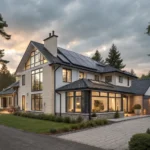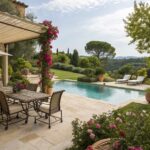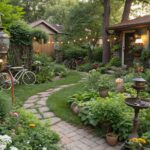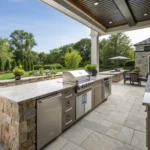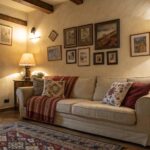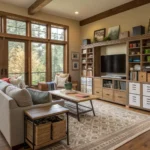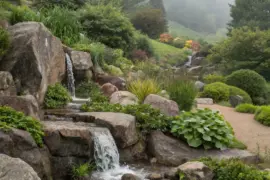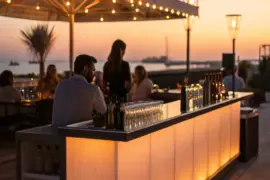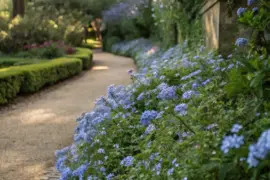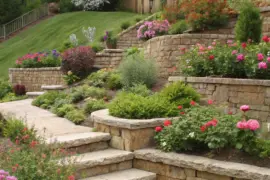Transforming outdoor spaces into enchanting retreats doesn’t require a substantial budget—it demands strategic thinking and creative resourcefulness. With thoughtful planning and the right combination of lighting, furniture, plants, and decorative elements, any outdoor area can become a captivating extension of your home.
The Foundation of Outdoor Atmosphere: Strategic Lighting

Lighting serves as the cornerstone of outdoor ambiance, creating visual interest while extending the usability of your space well into the evening hours. The most effective approach combines multiple light sources at varying heights to establish depth and warmth.
String Lights: The Universal Solution
String lights offer the most versatile and cost-effective lighting solution for outdoor spaces. These fixtures create instant warmth and can be adapted to virtually any layout or architectural feature.
Installation Strategies:
- Linear arrangements: String lights between posts, trees, or pergola beams to define seating areas
- Canopy effects: Create overhead coverage by crisscrossing multiple strands across patios or decks
- Perimeter definition: Outline fence lines, railings, or garden borders to establish clear spatial boundaries
For durability and energy efficiency, prioritize LED options with weatherproof ratings. Battery-operated varieties eliminate the need for electrical connections, making installation significantly more accessible.
Solar-Powered Solutions

Solar lighting systems represent an excellent long-term investment, eliminating ongoing electrical costs while providing reliable illumination. Modern solar fixtures have overcome earlier reliability issues through improved battery technology and more efficient photovoltaic cells.
Effective Applications:
- Pathway definition: Solar stake lights every 6-8 feet along walkways
- Accent lighting: Spotlights for highlighting architectural features or specimen plants
- Area illumination: Larger solar fixtures for general patio or deck lighting
The key to successful solar lighting lies in strategic placement—ensure fixtures receive at least 6 hours of direct sunlight daily for optimal performance.
Creative Lighting From Repurposed Materials
I’ve observed remarkable transformations using everyday materials converted into lighting elements. Mason jars, tin cans, and glass containers can be transformed into luminaries with minimal investment.
DIY Luminary Projects:
- Mason jar string lights: Thread battery-operated fairy lights into jars for portable ambiance
- Tin can lanterns: Punch decorative patterns and insert LED tea lights
- Wine bottle torches: Convert empty bottles into elegant tabletop flames using lamp oil
Budget-Conscious Furniture Solutions
Outdoor furniture represents one of the largest potential expenses in space transformation, but strategic approaches can dramatically reduce costs while maintaining style and functionality.
DIY Construction Projects
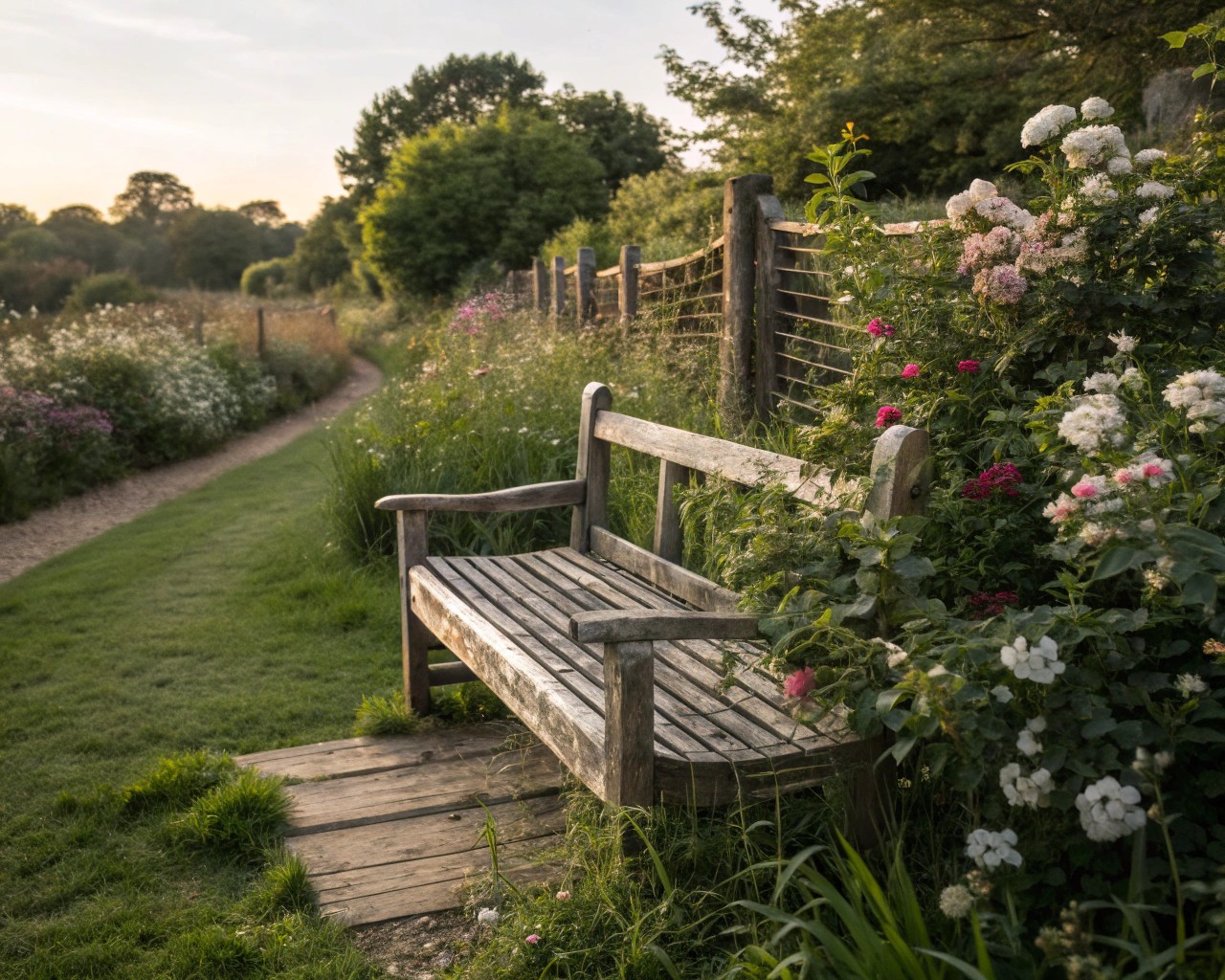
Building your own outdoor furniture offers complete customization while keeping costs below $100 per piece. Cedar remains the preferred material for its natural weather resistance, though pressure-treated lumber provides a more economical alternative.
Essential Tools and Materials:
- Basic power drill and saw (many retailers offer free cutting services)
- Galvanized hardware for weather resistance
- Wood preservative or exterior stain
- Pocket hole jig for strong, concealed joints
A standard 4×4 foot raised planter or bench requires approximately $80-100 in materials, significantly less than comparable retail options.
Upcycling and Repurposing Strategies
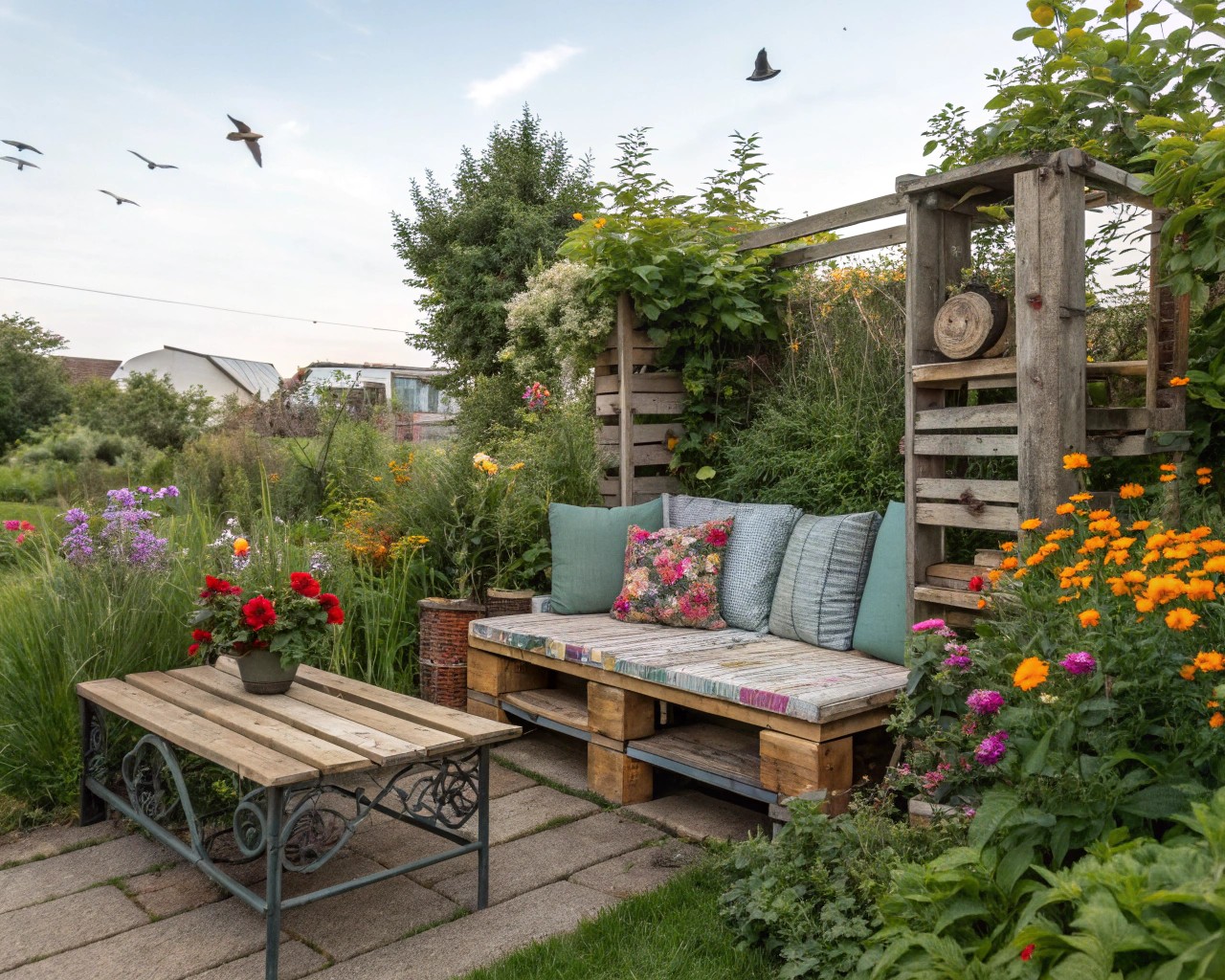
The most cost-effective furniture solutions often emerge from creative repurposing of existing materials. Old bathtubs become unique seating with added cushions, while wooden pallets can be transformed into coffee tables, planters, or seating platforms.
High-Impact Upcycling Projects:
- Pallet furniture: Sand, stain, and add cushions for instant seating
- Concrete block construction: Stack and secure with adhesive for modern, industrial aesthetics
- Tree trunk seating: Fallen logs make excellent rustic stools when properly prepared
I recommend focusing on one substantial furniture piece as an anchor, then building around it with smaller, budget-friendly additions.
Strategic Thrift Shopping
Thrift stores and online marketplaces yield exceptional furniture finds when approached systematically. Focus on solid construction over surface appearance—minor repairs and fresh paint can transform tired pieces into statement elements.
What to Look For:
- Solid wood frames (easier to refinish than particle board)
- Metal pieces suitable for spray painting
- Unique architectural elements that can serve dual purposes
Container Gardening for Maximum Impact
Plants provide the living foundation for outdoor atmosphere, but traditional landscaping can require significant investment. Container gardening offers flexibility, immediate impact, and budget control.
Budget-Friendly Container Selection
Effective containers don’t require expensive pottery—creativity and proper drainage matter more than aesthetics. Many household items can be repurposed into striking planters with minimal modification.
| Container Type | Cost Range | Best Uses | Preparation Required |
|---|---|---|---|
| Fabric grow bags | $5-15 | Vegetables, herbs | None |
| Repurposed buckets | $0-5 | Large plants, small trees | Drill drainage holes |
| Wooden crates | $10-25 | Herb gardens, succulents | Line with landscape fabric |
| Concrete blocks | $2-5 each | Modular systems | Stack and plant in openings |
Plant Selection for Budget Landscapes
Perennial plants offer the best long-term value, returning year after year while often expanding through natural division. Focus on native species adapted to your regional climate—these require less water, fertilizer, and pest control.
High-Value Plant Categories:
- Spreading perennials: Purchase one plant, divide after 2-3 years
- Self-seeding annuals: Marigolds, nasturtiums, and cosmos return naturally
- Herb collections: Provide culinary value while requiring minimal care
Budget-Stretching Techniques:
- Start from seeds rather than transplants when possible
- Join local garden clubs for plant swaps and divisions
- Time purchases for end-of-season sales at nurseries
Decorative Elements Through Creative Repurposing
Outdoor decoration achieves maximum impact when it reflects personal style while maintaining harmony with the surrounding environment. The most successful decorative schemes combine purchased elements with thoughtfully repurposed materials.
Artistic Upcycling Projects

I’ve found that the most engaging outdoor spaces incorporate unexpected elements that spark conversation while serving practical purposes. Old tools become garden art, discarded furniture transforms into planters, and architectural salvage creates focal points.
High-Impact Decorative Projects:
- Mosaic stepping stones: Use broken pottery or tiles on concrete forms
- Vertical gardens: Convert old ladders or pallets into plant displays
- Water features: Repurpose large containers into simple fountains with small pumps
Creating Zones Through Strategic Placement
Effective outdoor design creates distinct areas for different activities—dining, relaxation, gardening—even within limited space. Use furniture arrangement, lighting placement, and plant positioning to establish these zones without physical barriers.
Zone Definition Strategies:
- Floor treatments: Outdoor rugs or different materials signal space transitions
- Overhead elements: Umbrellas, pergolas, or suspended plants create intimate spaces
- Plant barriers: Tall containers or raised beds provide natural division
Seasonal Adaptability and Long-Term Value
Budget-conscious outdoor design must adapt to seasonal changes while maintaining year-round appeal. Plan installations that can be modified, relocated, or supplemented as seasons change and budgets allow.
Flexible Design Elements
Choose furnishings and decorations that can serve multiple purposes or be easily reconfigured. Lightweight containers can be rearranged for different occasions, while modular seating adapts to varying group sizes.
Multi-Season Strategies:
- Portable lighting: Battery-operated options move easily for different occasions
- Convertible furniture: Ottomans that serve as seating or tables
- Container mobility: Wheels or lightweight materials for seasonal repositioning
Building Over Time
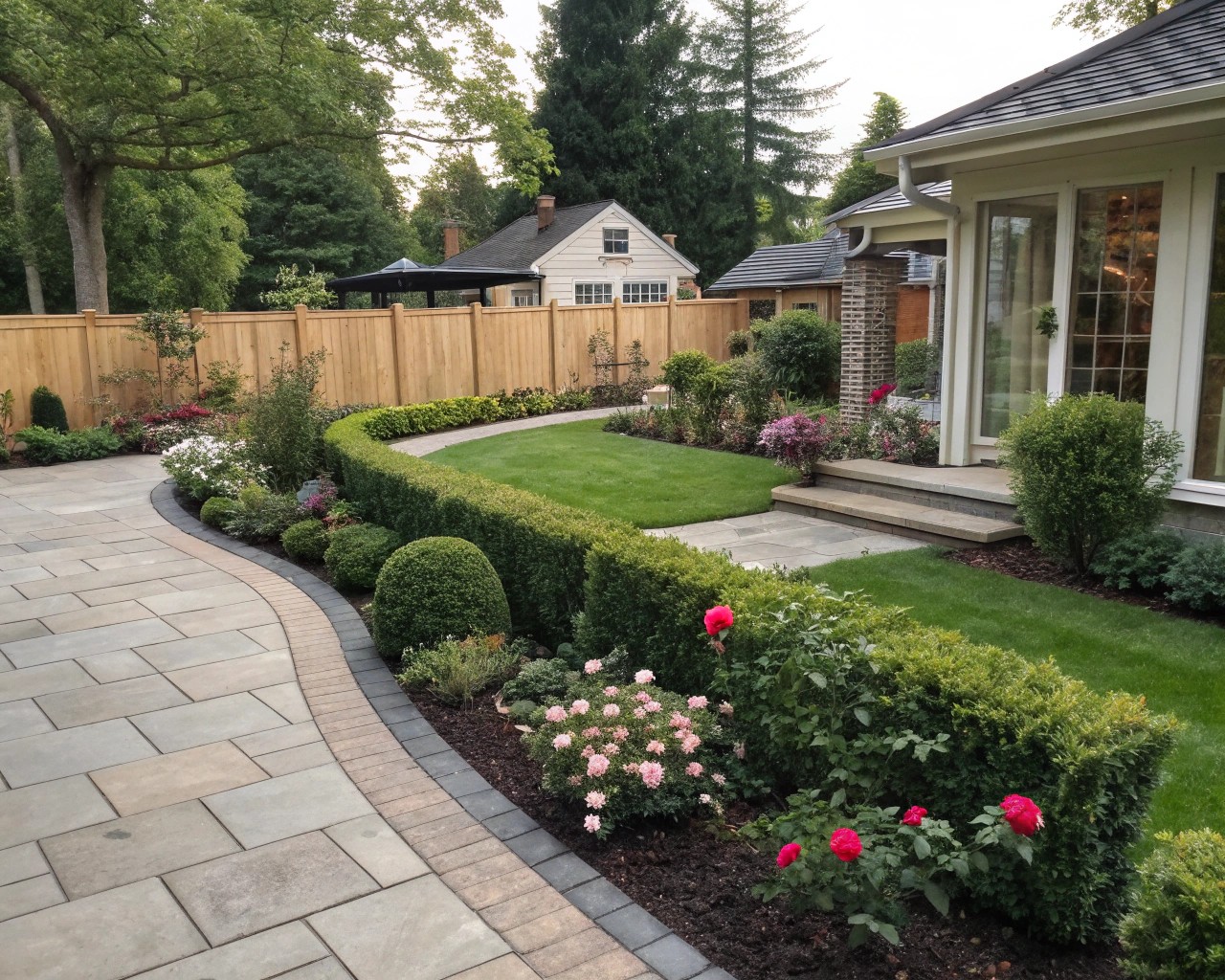
Rather than attempting complete transformation immediately, develop your outdoor space gradually. This approach spreads costs across multiple seasons while allowing you to learn what works best in your specific environment.
Phased Development Plan:
1. Year One: Establish basic lighting and one major seating area
2. Year Two: Add container gardens and decorative elements
3. Year Three: Expand with additional zones and refined details
Maintenance and Sustainability
Budget-friendly outdoor improvements must also be sustainable over time. Choose materials and plants that require minimal ongoing investment while maintaining their aesthetic appeal.
Weather Protection Strategies
Extend the life of your outdoor investments through proper protection and seasonal care. Simple covers, strategic placement, and regular maintenance prevent premature replacement costs.
Longevity Tips:
- Furniture protection: Use covers or store lightweight pieces during harsh weather
- Plant selection: Choose species adapted to your climate zone
- Material choices: Prioritize weather-resistant options even when slightly more expensive initially
Creating magical outdoor atmosphere on a budget requires strategic thinking rather than substantial spending. By focusing on lighting, creative furniture solutions, container gardening, and thoughtful repurposing, any outdoor space can become an extension of your home that provides years of enjoyment. The key lies in starting with high-impact elements like lighting and building gradually while maintaining flexibility for future enhancements.


